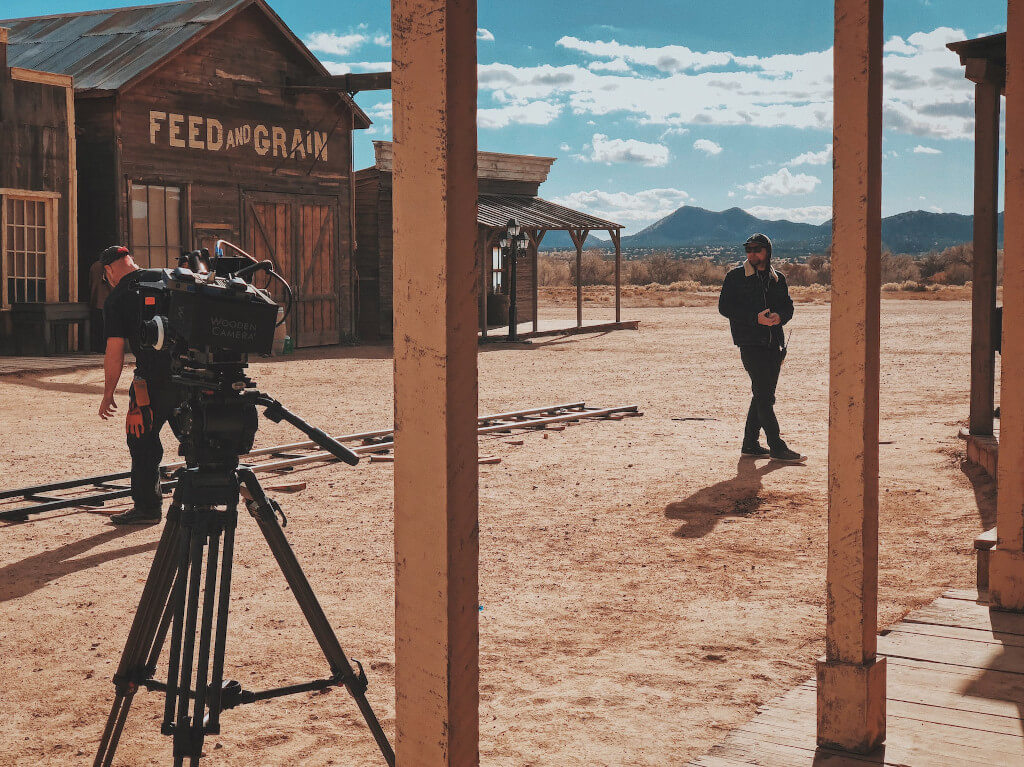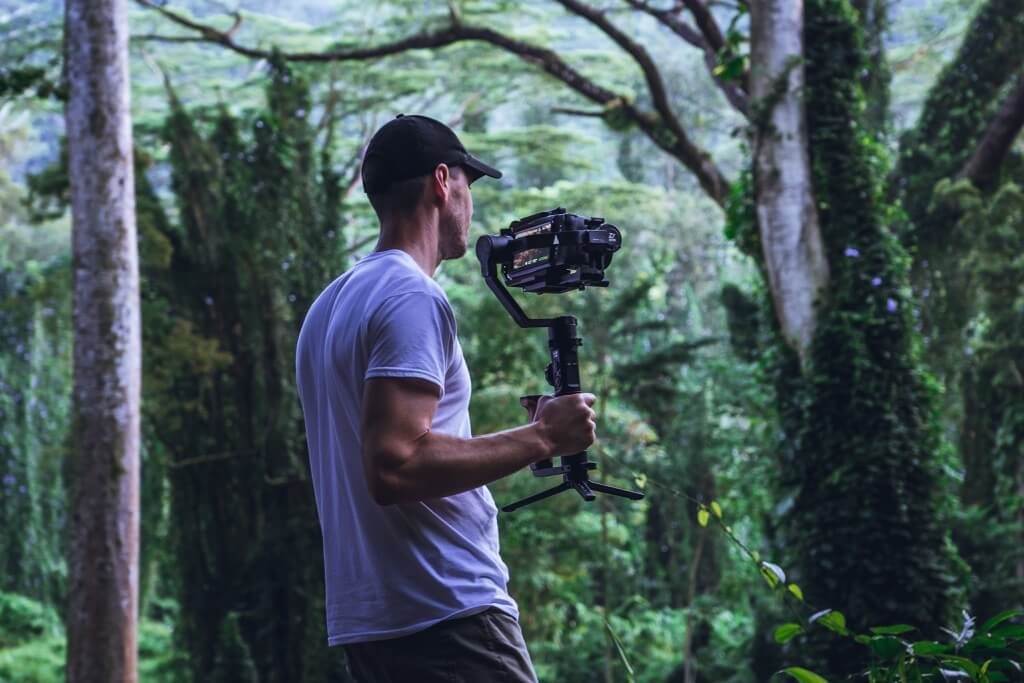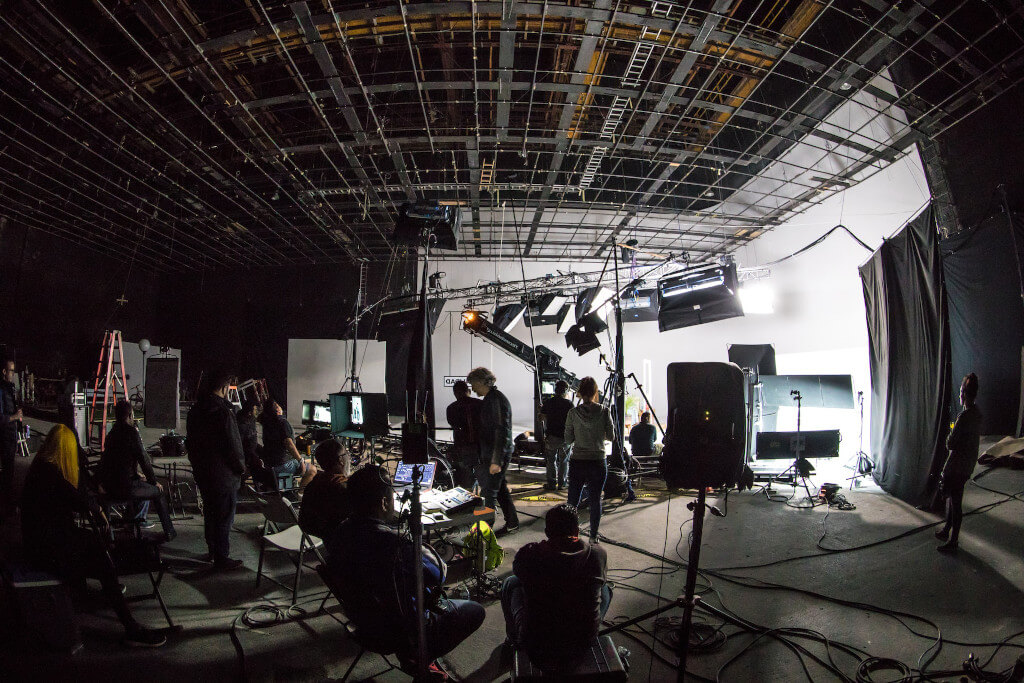The straightforward shot list is an underrated piece of equipment. Its apparent simplicity belies a robust value for filmmakers of all stripes and productions of any scale.
Here, we’ll show you how to put that energy to good use on your next set. We’ll go over the fundamentals of shot lists, examine some actual shot lists in action, and demonstrate how to create a shot list that’s tailored to your specific production needs. To help you get up to speed as quickly as possible, we’ll even give you a free shot list template to use.
What is a “Shot List”?
A shot list is a detailed rundown of every scene that has to be filmed. It’s used before production begins and brings together inventiveness and efficiency. The shot list breaks down the director’s big picture into manageable chunks that the production can work with.
There is a wide range of visual variability in available shot list examples and shot list templates. Extensive spreadsheets with in-depth technical specs and storyboards are only a few examples of shot lists. Some are just scribbles on scraps of paper.
A shot list example can take many forms, but no matter the format, it is always best when created as a group effort. After all, if a shot list isn’t communicated, it has no use. A shot list is only as helpful as the feedback it receives from key crew members.
The director, the cinematographer, and the first assistant director need to work together on the shot list. These three collaborate to guarantee that technical and logistical considerations are made in support of creative issues. When other crew members’ unique perspective or skills can be of great use, they may be called upon to participate.
The Purpose of a Shot List
Why do we need a shot list? In a broad sense, it’s about arranging things, but in practise, it serves a more subtle purpose. While shot lists are most often used by the director and cinematographer, producers can also benefit from them in several ways.
Strategy
The shot list functions most effectively as a planning device. Imagined projects can be broken down into manageable chunks using shot lists. The final script has a significant impact on the rental of props and the scheduling of the shoot.
The producer and their group really must have this. The shot list brings a film’s concept from the realm of the hypothetical to the realm of the possible. It’s a structure that makes budgeting and planning easier. It’s essential for budgeting and on-time project completion. Making sense of a shot list is, in a sense, a microcosm of making sense of the entire production.
Cooperation and Productiveness

A well-organized shot list reduces wasted time and improves productivity on set. This document serves as a central hub for all relevant production data. Any member of the crew can quickly get an idea of the day’s goals by reviewing the shot list.
Even if the director or another key creative has a last-minute change of heart, the shot list will provide a firm basis for creativity. When you have clear, accessible information, even minor adjustments become much more manageable.
This feature allows the producer to use the shot list as a failsafe. The best-laid plans often need to be adjusted during a long production. The shot list serves as a communication hub and a means of making sense of all the shifting data. It helps to reduce the impact of unforeseen expenditures by informing and facilitating the changes a producer must make to a project’s budget and logistics.
Seeing Things Clearly
Finally, the shot list is a tool for innovation. Developing the creative idea of a project by figuring out how to make a shot list is a production-friendly strategy. This method necessitates minute-by-minute planning on the part of the creatives, paving the road for their vision to be realised. The shot list also allows producers to keep their hands in the creative process without getting too entangled in the details. Through the specifics provided in the director’s shot list, a producer can engage with the director’s vision.
The shot list aids the producers in directing the film and coordinating the rest of the production. It establishes a link that allows them to provide their knowledge of the progress of a project.
What Does a Shot List Entail?
There is no standard format for a shot list. Three alternative shot list examples might look slightly different from one another. To learn how to construct a shot list, you must first determine what data and presentation options will be most useful for your particular endeavour.
Certain parts, however, are expected to be present. We identified 11 core components that must be present in any shot list example. We’ll examine each of these components in turn below.
Acting Role
Shot lists are more manageable with scene numbers. They identify the scenes in your shooting script and the corresponding shots. The lack of scene numbers may seem inconsequential, yet it may completely derail a performance. The scene numbers serve as anchors that link together many smaller jobs. They correlate specific scenes with information from the script breakdown created for each department.
They play an essential role in developing the plan, and consequently, the financial plan. They have such an impact that they even affect how effectively film is organised in post-production. Shots in commercials and music videos may not always line up with scene numbers, but the notion is still important. Label your shots with the scene or order in which they appear.
ID Shot
It’s vital to properly identify each scene’s shots. Scenes are numbered in order, so shots are typically labelled with corresponding letters. The “1A” indicates that this is the first shot in the first scene.
You should update these letters as your filming schedule develops. Shots are often numbered in the order they are taken during primary photography. Shot “C” could become “A” if your AD constructs the schedule if it’s quicker to shoot the third shot on your list first.
Explanation
There needs to be a place to describe each shot in every shot list template. Both the shot and the action it depicts can be described in this section. Each item on your list should have a description of its story purpose, but the level of specificity is up to you. The length of a shot’s description often varies with how intricate the photo is.
The Size of the Shot

The depth of field of a shot is proportional to its size. Is the shot going to be a close-up (CU) of an actor? Or is it a W-angle image of the entire structure?
Types of Shot Sizes
- BROAD – Sets the characters in their environments.
- The MEDIUM (MED) frame size encompasses an individual from the waist up.
- MEDIUM CLOSE-UP (MCU) – Shows an actor or actress from the chest up.
- CLOSE-UP (CU) – A shot that focuses solely on a person’s head and face.
- Tightly frames a particular feature of a character’s face or body in an EXTRA CLOSE-UP (ECU).
- INSERT focuses on one element or event within a scene (rather than filming the entire scene like coverage).
When organising a shoot, knowing the size of each shot is crucial. They’re a quick way to express how much material fits into a certain picture. This seemingly insignificant piece of data can affect the structure of the entire set.
The Sort of Shot You Take
image type, as used here, is an umbrella phrase that might refer to the perspective, narrative function, or other unique aspects of a given image. The type of shot, in conjunction with its dimensions, serves as a handy shorthand for visualising the process by which a certain shot is created.
Words like “high angle” and “low angle” are often used to describe the orientation of the camera. A “POV” shot is meant to convey the perspective of a certain character. One may even use the term “coverage” to define the fundamental purpose of a shot.
A Revolving Camera
The term “camera movement” is used to describe any type of motion used to take a photograph. All kinds of creative camera motions are fair game, such as panning, tilting, dollying, jibbing, handheld, Steadicam, and drone flight.
The strange thing about this area of study is that even inactivity is recorded. The term “static” is used to describe a shot in which the camera remains entirely still throughout.
Lens
The lens used in each shot is typically included on shot list templates. In addition to the focal length most suitable for each shot, this may also include information about any specialised lenses that were used.
In this area, you’ll find details like whether or not a macro lens is needed for a certain photo. A tilt-shift lens, zoom lens, or any other lens you think is important to test might be similarly specified.
Frame Rate
The term “frame rate” refers to the rate at which individual frames of a shot are recorded. This is the technical term for describing whether a photograph will be recorded at regular speed or slowed down for later use.
Tools
In the shot list template’s equipment section, you can detail any specialised gear that will be needed to pull off a particular take. This part is quite general and can be used to record any piece of equipment that stands out to the user.
You could, for instance, provide more information about the use of the tripod and the dolly. You may choose to feature camera accessories or props utilised in a particular light gag. Any set of tools you think will help you make sense of a shot is fair game.
Location
Both scripted and real-world locations might be referred to as “location” on a shot list. There is no hard and fast rule about which to use, but you should consider how well your message is conveyed. Scripted locations will be the most useful at the beginning. The slug line for each scene contains crucial information that might be used throughout production. For instance, is it an indoor or outdoor setting? Is daytime or nighttime shooting preferable?
Shooting locations may become more useful sources of information as pre-production progresses. At the tech scout, for instance, you might figure out that staging a scene in two locations instead of one is more aesthetically pleasing. Then, instead of basing your shot breakdown on the one location where all of the action takes place, you should consider the many production regions.
Notes
Last but not least, the notes portion of any shot list template deserves more credit than it gets. Any data that doesn’t readily fit into the other categories can be dumped here. It’s a basic function that’s sometimes overlooked, but it may help you save a lot of money and time in production if you use it to communicate with your team. That’s right, the notes field is completely open for business. If someone tries to advise you how to make a shot list without room for notes, you should probably just run away from them.
It’s An Effective Tool
The shot list is an effective tool, but it must be kept in mind that it can be modified as needed. You should prioritise learning how to create a shot list that serves your specific production demands.





